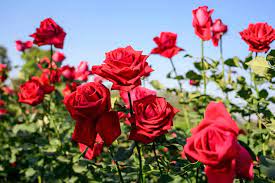
Ascending Elegance: A Comprehensive Guide to Growing and Caring for Climbing Roses
Ascending Elegance: A Comprehensive Guide to Growing and Caring for Climbing Roses
Climbing roses, with their cascading blooms and captivating vertical growth, add a touch of romance and elegance to gardens and landscapes. These enchanting climbers are prized for their ability to transform walls, arbors, and trellises into vibrant showcases of color and fragrance. This comprehensive guide explores the world of climbing roses, offering insights into their types, planting, pruning, support structures, and general care to help enthusiasts cultivate these botanical works of art.
### **Understanding Climbing Roses:**
Climbing roses belong to a diverse group that includes various types such as large-flowered climbers, ramblers, and modern climbers. Unlike traditional bush roses, climbers exhibit longer canes that lend themselves to vertical growth. Their flexibility makes them ideal for training along structures, creating stunning displays that can reach considerable heights.
### **Selecting the Right Type:**
Before delving into care practices, it’s essential to choose the right type of climbing rose for your specific needs and garden design. Large-flowered climbers, such as the “New Dawn” rose, are known for their showy, individual blooms and repeat flowering. Ramblers, like the “Lady Banks” rose, produce clusters of smaller flowers and are generally more vigorous. Modern climbers combine traits of both, offering versatility in terms of bloom size and growth habit.
### **Ideal Planting Conditions:**
Successful cultivation of climbing roses begins with proper planting. Choose a location that receives at least six hours of sunlight daily, ensuring the soil is well-draining and enriched with organic matter. Dig a hole large enough to accommodate the root ball, and plant the rose at the same depth as it was in the container. Water thoroughly after planting and add a layer of mulch to conserve moisture and suppress weeds.
### **Providing Structural Support:**
Climbing roses, as their name suggests, thrive when provided with vertical support structures. Install sturdy trellises, arbors, or fences for the roses to ascend. When planting near a wall, use horizontal wires or a trellis to guide the canes. The support structures not only encourage upward growth but also contribute to the overall aesthetics of the garden. Secure the canes loosely to the support to prevent damage and allow for flexibility.
### **Watering with Care:**
Climbing roses benefit from consistent and deep watering. Aim to keep the soil consistently moist, especially during dry periods. Water the base of the plant, avoiding overhead irrigation that can lead to fungal diseases. Mulching around the base helps retain soil moisture and regulates temperature. In periods of prolonged drought, increase watering frequency to support healthy growth and blooming.
### **Fertilizing for Vigorous Growth:**
Climbing roses, being robust growers, appreciate regular fertilization to sustain their vertical ascent and abundant blooms. Apply a balanced fertilizer in early spring as new growth emerges, and consider additional feedings during the growing season. Slow-release fertilizers are excellent for providing a steady supply of nutrients. Be mindful not to over-fertilize, as this may lead to excessive vegetative growth at the expense of flowering.
### **Pruning Techniques:**
Pruning is a crucial aspect of caring for climbing roses and contributes to their overall health, shape, and flowering capacity. Prune during the dormant season, typically in late winter or early spring. Remove dead, damaged, or crossing canes, leaving the healthiest and most vigorous canes to encourage new growth. Repeat-flowering climbers benefit from lighter pruning after the first flush of blooms to encourage additional flowering.
### **Training Canes for Optimal Growth:**
Training climbing roses involves guiding their canes along the support structure to achieve an appealing and balanced display. Gently tie young canes to the support using soft twine or flexible ties, allowing room for growth and flexibility. Regularly inspect the canes and adjust their position as needed, ensuring they are evenly distributed for an aesthetically pleasing appearance.
### **Dealing with Disease and Pests:**
Vigilance against common rose ailments is essential to maintain the health and vitality of climbing roses. Keep an eye out for signs of powdery mildew, black spot, and aphids. Fungicides and insecticidal soaps can be used preventively or as needed. Good air circulation, achieved through proper spacing and pruning, is a proactive measure against fungal issues. Regular inspection allows for early intervention, reducing the need for chemical treatments.
### **Winter Care:**
In regions with cold winters, climbing roses benefit from winter protection. Mulch around the base of the plant with organic material to insulate the roots and protect against temperature fluctuations. Consider wrapping the canes with burlap or using protective covers to shield the plant from harsh winter winds. Winter care ensures the rose’s resilience and promotes healthy spring growth.
### **Conclusion: Ascending Beauty in the Garden:**
Cultivating climbing roses is an art that combines the grace of vertical growth with the timeless beauty of these enchanting blooms. With proper selection, thoughtful planting, and attentive care, climbing roses can transform any garden into a haven of cascading elegance. Whether adorning a trellis, framing an entrance, or gracing the walls of a garden, climbing roses stand as living testaments to the beauty that nature, with a touch of human guidance, can gracefully ascend and achieve.


